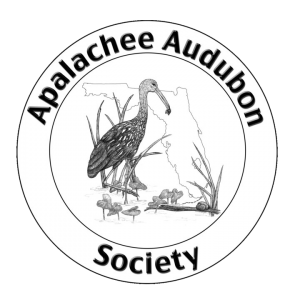The early migrants will soon be with us. Step outside one morning over the next few weeks and you’ll be greeted by the sound of a Purple Martin, Northern Parula, Louisiana Waterthrush, or Great Crested Flycatcher as these birds return to our area from their winter sojourns.
I note these early migrants with a brief pause in my step – a quick, simple mental tick acknowledging the progression of Spring. However, there’s one early migrant that invariable causes me to stop dead in my tracks and linger as long as possible in the passing moment.
The gorgeous American Swallow-tailed Kite also arrives in early March in our area and continues to spill across north Florida throughout April. It’s one early migrant that you’re more likely to see than hear–and it makes a Spring encounter much more captivating as a result. The sight of that large, graceful, thin-winged, black-and-white body moving above like no other bird — gliding not flapping, ascending rapidly on the wind with a slight tilt of its wings only to turn and freeze as if suspended by string.
Florida supports the largest population of these elegant birds in North America, but that may not be a cause for celebration. The kite faces numerous challenges, and Dr. Ken Meyer, our program speaker in April, has a firm finger on the pulse of this bird’s declining health. It would be inappropriate to delve too much into all the great information Ken has generated over the years; instead we hope you will come and enjoy Ken’s presentation.
Here are some true/false statements that you’ll be able to answer after attending our program on April 28 on one of our most notable early migrants, the Swallow-tailed Kite:
- The dark, black color of Swallow-tailed Kites provides protection from night-time predators.
- Kites live primarily by feeding on squirrels, mice, and other small mammals.
- Most of our kites funnel through a single pass high in the Andes to reach their wintering grounds in South America.
- Our kites also fly around the Gulf of Mexico during migration to avoid a long, potentially treacherous flight over open water.
- Kites fly with strong wing beats that enable them to move quickly into on-coming winds.
- Fall migration is a huge social affair for kites where they aggregate in the thousands in some areas.
- Kites like to nest in ancient live oaks because the dense branching provides better cover.
- Kites are a declining, endangered species formally recognized by state and federal governments.
- Kites mate while flying.
- Kites rarely eat their prey on the wing.
Jim Cox is a long-time member of Apalachee Audubon and Stoddard Bird Lab Director at Tall Timbers Research Station & Land Conservancy.

